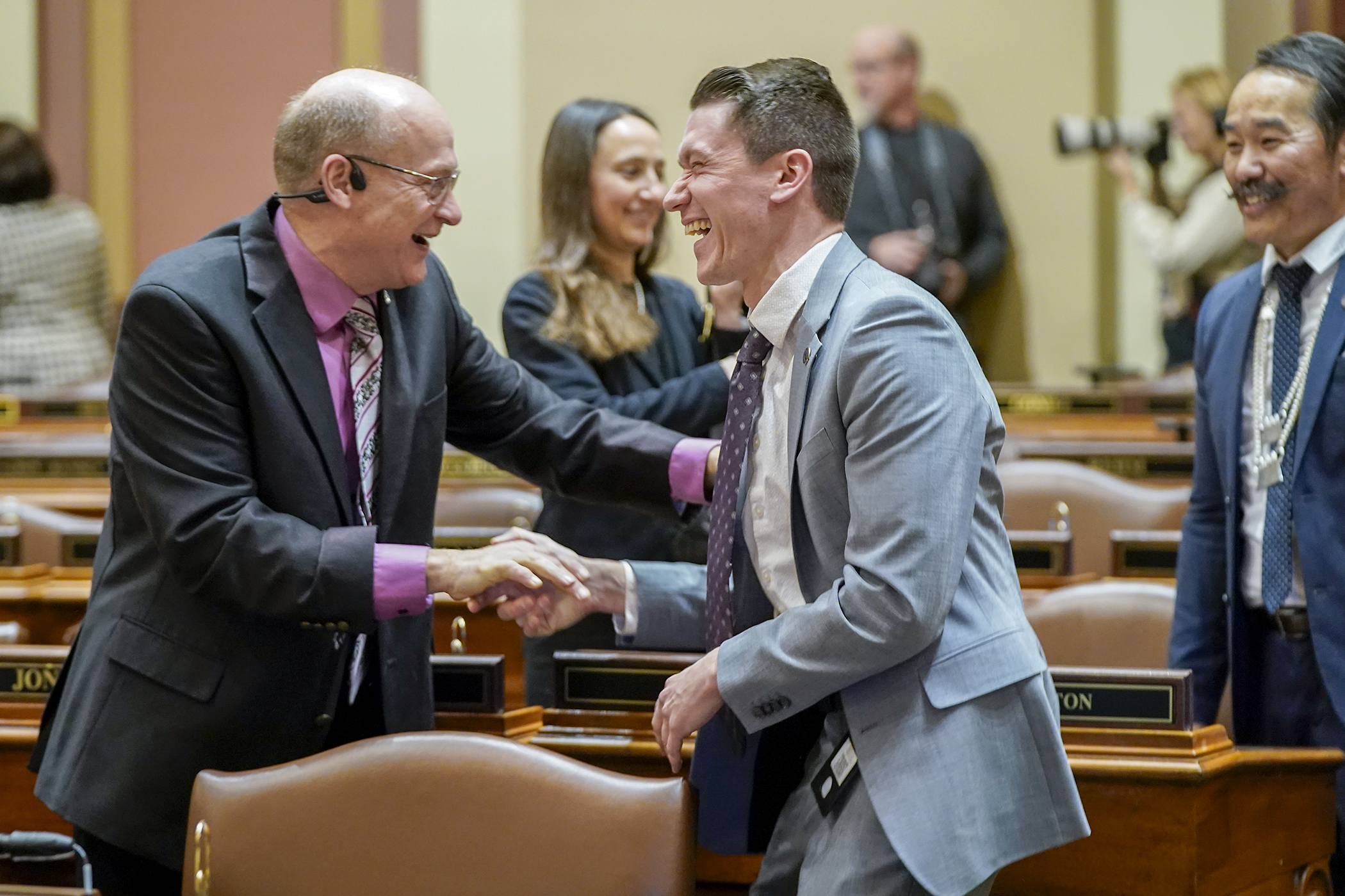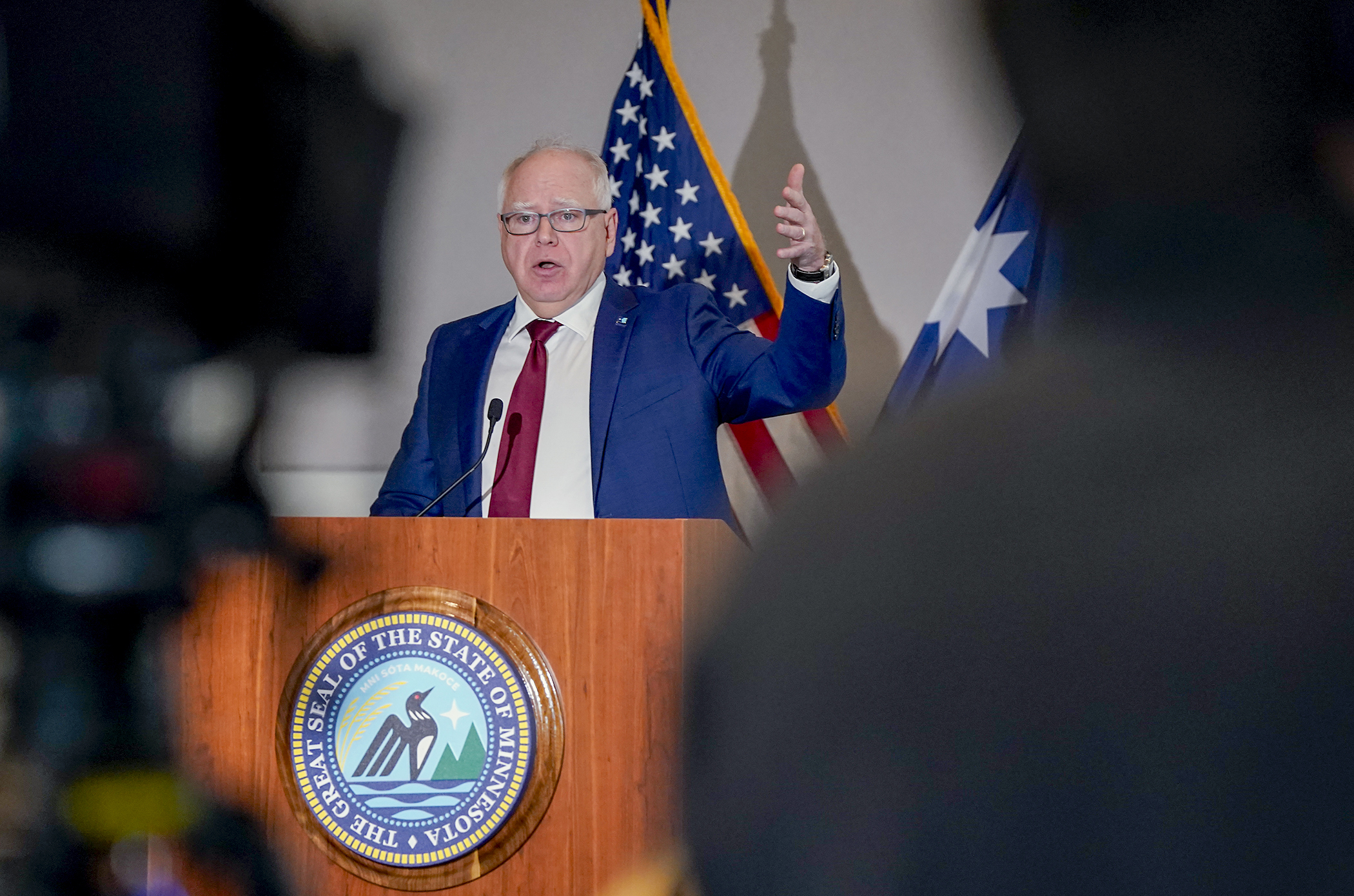Where to build MN's next vets home? Lawmakers face tough call in possible bonding proposal

Lawmakers and the governor are facing a difficult decision on how to best serve Minnesota veterans who need full-time care — and the clock is ticking.
While there are currently five state-run veterans homes — in Minneapolis, Hastings, Silver Bay, Luverne and Fergus Falls – with a combined 824-bed capacity, there is still room for more. Under a federal government-dictated formula, Minnesota can build housing for 234 more beds eligible for matching building costs and veterans’ services.
The question, however, is where will they build?
Three different locations in Greater Minnesota are jockeying for the opportunity to house and serve veterans who need assistance: Montevideo, Bemidji and Fillmore County. They have the backing of Rep. Tim Miller (R-Prinsburg), who sponsors HF1109, a $16 million bonding plan to construct veterans homes in Montevideo and Bemidji; and Rep. Greg Davids (R-Preston), whose HF79 would prioritize $10 million for a Fillmore County facility.
Rep. Jim Davnie (DFL-Mpls) sponsors HF3912, a $26 million plan to expand the current veterans home in Minneapolis.
After initial movement on those bills last session, they currently await action by the House Capital Investment Committee.
“That is the question,” Ben Johnson, legislative director for the Department of Veterans Affairs said Monday. “What are the criteria the Legislature and governor are looking at?”
WATCH Full video of the joint House/Senate veterans home hearing
Johnson said the decision could be based on the concentration of veteran population — the seven-county metropolitan area would win there — or other criteria like geography and underserved areas, an argument that representatives from both Bemidji and Fillmore County have made.
Minnesota is unique, too, in offering some beds to spouses or to Gold Star mothers and fathers.
A veterans home project on “clean land” — that is, ready-to-build plots — would cost an estimated $62.5 million, but the state would initially have to commit 35 percent. In a presentation to the House Veterans Affairs Division and the Senate Veterans and Military Affairs Finance and Policy Committee, Johnson said that a new-build project would take about 18 to 24 months.
If the Legislature includes a new veterans home building project in its bonding proposal this year, 234 beds could be completed by 2024. Under that timeframe, the state would have to submit its initial application documents to the federal government by April 15, 2019.
The number of allocated beds could change if the Legislature doesn’t act by 2020, when new census data is collected and the federal veterans department realigns its priorities. Minnesota is facing stiff competition, too.
“We have noticed a decrease in veterans (in Minnesota) and an increase in Sun Belt states,” Johnson said, noting veterans prefer to live in places like Arizona, Texas and Florida.
The federal government, Johnson said, has assessed Minnesota’s needs are “much less than a lot of states.”
Related Articles
Search Session Daily
Advanced Search OptionsPriority Dailies
Full House convenes for first time in 2025, elects Demuth speaker
By Tim Walker DFL, Republicans convene with a quorum for the first time in 2025 session after agreeing to a power-sharing deal.
DFL, Republicans convene with a quorum for the first time in 2025 session after agreeing to a power-sharing deal.
Walz proposes slimmed-down 2026-27 state budget, sales tax changes
By Tim Walker This is an odd-numbered year, and so the Legislature is constitutionally required to craft a budget to fund the state government for the next two fiscal years.
Gov. Tim Walz...
This is an odd-numbered year, and so the Legislature is constitutionally required to craft a budget to fund the state government for the next two fiscal years.
Gov. Tim Walz...